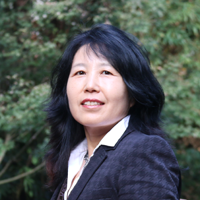- Between Undercurrent and Mainstream: Hand-copied Literature and Unofficial Culture during and after the Cultural Revolution, Asian Studies Review Volume 44 Issue 2, 2020. 239-257
- Portrait of An Artist as Historian: On Shen Jiawei and History Painting,YiShu: Journal of Contemporary Chinese Art, Volume 18, Number 5, 2019. 6-22
- Ma Jian and Gao Xingjian: “Intellectual Nomadism and Exilic Consciousness in Sinophone Literature,” Canadian Review of Comparative Literature, Vol. 41.2 (2014), 126-146.
- (Co-authored with Colin S. Hawes) “Primetime Dispute Resolution: Reality TV Mediation Shows in China’s ‘Harmonious Society,’” Law & Society Review, Vol. 47 issue 4 (2013), 739-770.
- “可能性的空间:加拿大本土制作的华语电视节目中的公民对话与多元文化身份认同” (“Space of Possibilities”: Civic Discourse and Multicultural Citizenship in Locally Produced Chinese Television Programs in Metro Vancouver), trans. by Tang Yang, 全球传媒学刊 (Global Media Journal, Chinese edition), Vol. 14 (Summer 2013), 31-43.
- “金山想象与世界文学版图中的汉语族裔写作” (Imagining Golden Mountain: Chinese Ethnic Writing in World Literature) in 《华文文学》(Sinophone Literature),2012 (5), 5-16.
- “Le changement à travers le mélodrame” (Melodrama for Change), trans. by Isabelle Henrion-Dourcy, Revue Anthropologie et Sociétés, 36 (1-2), 2012, 115-138.
- “The `Affective Alliance’: Undercover, Internet Media Fandom, and the Sociality of Cultural Consumption in Post-socialist China,” Modern Chinese Literature and Culture, Vol. 24 (1) (Spring, 2012), 1-47.
- “下崗女工, 苦情戲, 及中國電視劇的情感空間” (“Laid-off Female Workers, Drama of Bitter Emotions, and the Affective Articulation of Chinese TV drama”), 《傳播與社會學刊》 (Communication and Society). Vol. 19 (2012), 31-58.
- “Space of Possibilities: Civic Discourse and Multicultural Citizenship in Locally Produced Chinese Television Programs in Metro Vancouver,” Journal of International Migration and Integration, Vol. 14 issue 1 (2013), 119-138.
- “Cultural propaganda in the age of economic reform: popular media and the social construction of Shanxi merchants in contemporary China.” The China Journal, No. 63 (Jan. 2010), 79-99.
- “Genre Film, Media Corporations and the Commercialization of the Chinese Film Industry: The Case of New Year Comedies,” Asian Studies Review, Volume 31, Issue 3, (Sept. 2007), 227-242.
- “重建帝国: 历史正剧和文化民族主义在大众文化中的新的表现形式” (“Rebuilding the Empire: Historical TV Drama and the New Expressive Form of Cultural Nationalism”), Portal: Electronic Journal of Multidisciplinary International Studies, University of Technology, Sydney Press, Vol. 4 No. 1 (2007).
- “Big Shot from Beijing: Feng Xiaogang’s ‘He sui pian’ and Contemporary Chinese Commercial Film,” Asian Cinema, 14.1 (Spring/Summer, 2003), 175-87.
- “For Reference Only: Restricted Publication and Circulation of Foreign Literature During the Cultural Revolution,” Yishu: Journal of Contemporary Chinese Art, Vol. 2 (Summer, 2002) 76-85.
- “Between a Rock and a Hard Place: Chinese Literary Journals in the Market,” Modern Chinese Literature and Culture, Vol.14, No.1 (Spring, 2002), 93-144.
- “Swan and Spider Eater in Problematic Memoirs of Cultural Revolution,” Positions: East Asia Cultures Critique, Vol. 7.1 (Spring 1999), 239-52.
- “Ge Fei ‘On the Margins,’” BC Asian Review, Vol.10: 1997. 70-120.
- “Is There a Realism in ‘New Realism,’” BC Asian Review, Vol. 8: 1995, 117-27

